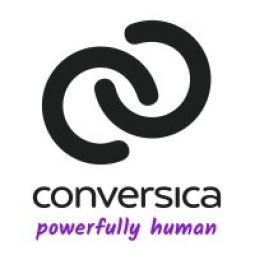Technology Category
- Platform as a Service (PaaS) - Application Development Platforms
Applicable Industries
- Education
- Equipment & Machinery
Applicable Functions
- Quality Assurance
- Sales & Marketing
Use Cases
- Time Sensitive Networking
- Visual Quality Detection
Services
- Testing & Certification
About The Customer
IBM is a multinational technology company that has been in operation for over a century. Traditionally, the company has focused on in-person selling of technology services and products. However, in recent years, IBM has been working to integrate digital marketing into its sales model. This has involved a shift in mindset for the company's marketers, who are now tasked with viewing the customer’s journey as something much broader and more flexible. The company has also been working to improve its infrastructure, moving away from a dated system burdened with custom enhancements to a more modern, global management platform.
The Challenge
IBM, a 105-year-old company, has been traditionally focused on in-person selling of technology services and products. However, with the rise of digital channels, the company faced the challenge of integrating digital marketing into its established sales-centric model. This was particularly difficult due to IBM's long-established infrastructure, which was dated and burdened with custom enhancements. The company needed to transition to a more modern, global management platform while avoiding custom enhancements. Additionally, IBM needed to change the mindset of its marketers to view the customer’s journey as something much broader and more flexible. Another major challenge was the low rate of phone-ready leads being brought in through digital channels.
The Solution
IBM decided to implement Conversica’s AI Automated Sales Assistant, a solution that could help improve the rate of phone-ready leads from digital channels. The first team to test Conversica at IBM was the Watson Developer Cloud. The implementation of Conversica led to promising results, with lead engagement reaching 26%, of which 18% qualified as hot leads. Out of the roughly 6,900 leads assigned to Conversica, 54 high-value opportunities were created, representing a pipeline-revenue high of $6.5 million. Conversica also allowed for increased accountability in media buys, enabling IBM to judge the source of responses by provider and have a more educated conversation about which media purchases were actually producing quality leads.
Operational Impact
Quantitative Benefit

Case Study missing?
Start adding your own!
Register with your work email and create a new case study profile for your business.
Related Case Studies.

Case Study
Smart Water Filtration Systems
Before working with Ayla Networks, Ozner was already using cloud connectivity to identify and solve water-filtration system malfunctions as well as to monitor filter cartridges for replacements.But, in June 2015, Ozner executives talked with Ayla about how the company might further improve its water systems with IoT technology. They liked what they heard from Ayla, but the executives needed to be sure that Ayla’s Agile IoT Platform provided the security and reliability Ozner required.

Case Study
IoT enabled Fleet Management with MindSphere
In view of growing competition, Gämmerler had a strong need to remain competitive via process optimization, reliability and gentle handling of printed products, even at highest press speeds. In addition, a digitalization initiative also included developing a key differentiation via data-driven services offers.

Case Study
Predictive Maintenance for Industrial Chillers
For global leaders in the industrial chiller manufacturing, reliability of the entire production process is of the utmost importance. Chillers are refrigeration systems that produce ice water to provide cooling for a process or industrial application. One of those leaders sought a way to respond to asset performance issues, even before they occur. The intelligence to guarantee maximum reliability of cooling devices is embedded (pre-alarming). A pre-alarming phase means that the cooling device still works, but symptoms may appear, telling manufacturers that a failure is likely to occur in the near future. Chillers who are not internet connected at that moment, provide little insight in this pre-alarming phase.

Case Study
Premium Appliance Producer Innovates with Internet of Everything
Sub-Zero faced the largest product launch in the company’s history:It wanted to launch 60 new products as scheduled while simultaneously opening a new “greenfield” production facility, yet still adhering to stringent quality requirements and manage issues from new supply-chain partners. A the same time, it wanted to increase staff productivity time and collaboration while reducing travel and costs.

Case Study
Integration of PLC with IoT for Bosch Rexroth
The application arises from the need to monitor and anticipate the problems of one or more machines managed by a PLC. These problems, often resulting from the accumulation over time of small discrepancies, require, when they occur, ex post technical operations maintenance.

Case Study
Data Gathering Solution for Joy Global
Joy Global's existing business processes required customers to work through an unstable legacy system to collect mass volumes of data. With inadequate processes and tools, field level analytics were not sufficient to properly inform business decisions.







